How to Make Great Art (and how to use ethical AI to help)
Happy Artists, Low Stress and Maximum Awesome
Art will make or break your game. It’s the first thing people see, the hook that gets them to stop, look closer, and care about what you’ve created. Finding the right artists, and learning how to work with them, is often just as challenging as building the game itself.
As a game designer, I spend most of my time playtesting with ugly cards containing little more than numbers and text. My prototypes are intentionally ugly because ugly is easy to iterate. We don’t get attached to ugly. Most new designers blunder by investing in beautiful art and prototypes before their game is defined, wasting effort and slowing down the creative process. When first working on a design, my advice is always keep it simple, keep it ugly, and keep it flexible.
But there is an important inverse principle to that advice. An ugly prototype makes it easy to walk away from your current game iteration, but an ugly final game will make it easy for your players to walk away, too. Art and visual design is as important as game design when crafting a final product.
Art is where that vision takes shape, layering story and identity on top of your well-crafted mechanics. If you’re designing a game, chances are you already have a vision in your head for the characters, the colors, the world, the components and maybe even 3-D figures.
Of course, if you’re new to game design, figuring out how to find the right artists, and how to collaborate with them effectively, can feel overwhelming. The first artist I hired was Eric Sabee, a fine arts student who lived down the hall from me in my first apartment after college. We became instant friends and I commissioned an art piece from him that still hangs on my wall today.
When I first started working on Ascension over ten years later, I remembered the incredible work he had done, and I called him up to see if he was interested in working with me. Because I already knew and loved his style, I was able to build a world around it and create something truly unique (while also using a lot of pieces he had already done, saving time and money on the project). He had never worked on a game before, and I had little experience with art, but together we discovered a unique style that helped Ascension stand apart from everything else on the market.
Since then, I’ve had the chance to work with incredible art directors and artists on massive brands like Marvel, DC, World of Warcraft and Bakugan as well as on our own original IP for games like Ascension, SolForge Fusion, and Shards of Infinity.
Those projects had art budgets that ranged from hundreds of thousands of dollars to almost no budget at all. Through all of it, I’ve learned that with a few clear guidelines, you can avoid a lot of headaches and set yourself and your artists up for success.
Starts with the Big Three
When you’re starting a new game project and looking for artists, there are three crucial factors to define right away:
Theme: What is the story and style of your game? What emotions are you trying to evoke?
Budget: How much art do you need and how much can you spend per piece of art?
Deadline: When does all the art need to be finished?
These three questions will instantly narrow down your options. Some artists may have the perfect style but can’t meet your deadline. Others may fit your timeline but not your budget. Lastly, some may simply not match the theme of your game.
When it comes to deadlines, always give yourself some cushion. Art takes time, and there are countless reasons the process can slow down. The same goes for budget, you’ll want some flexibility built in because you may need some additional edits, or pieces of art as you move forward with your project. If you don’t have a deadline or idea for your budget, I strongly suggest you set some aggressive ones. Deadlines are Magic and forcing yourself to work with a bit less time and money than you might want will push you to get things done efficiently (spoiler alert: it will always take longer and cost more than you think it will).
Theme is a huge topic we won’t dive deeply into here, but the short version is this: you need to be clear on your story and how the art supports it before you begin commissioning work. It can be helpful to think of other stories you know and reference the emotional highlights that you want to evoke (e.g. a horror game might want to evoke the feeling when the facehugger first leaps out in the movie Alien).
Defining these three factors up front can also shape your entire art strategy. A tight deadline might require multiple artists working at once. A long timeline might let you stick with a single artist for a consistent look. If you’ve got a big budget, a heavy art load, and very little time, an art house (a studio with multiple staff artists producing work in parallel) might be your best bet.
Build a Style Guide
Once you know your Big Three, the next step is building a style guide.
A style guide is simply a document or slideshow that gives artists the key information they’ll need. It might include:
Reference art for characters and environments
Notes on line thickness or brush style
Color codes to keep everything consistent
Story elements or mood boards
Artists or authors who inspire the project (for visual and thematic reference)
Boundaries on things like violence, gore, or nudity
Keep the guide clear and focused. Too much detail can overwhelm, but don’t hold back on information that’s truly essential.
For reference, here is the style guide we used when working with Artists for our Ascension 15th Anniversary crowdfund.
Find Artists
From there, start reaching out. ArtStation, Deviantart, social media, and conventions (game and comic book) are all great places to connect with artists. When you contact them, be specific about your style, ask their rate per piece, and how long they expect each piece to take. Not everyone will respond and that’s normal. Lots of artists will be outside your price range, and that’s also normal. Don’t get discouraged, there are a lot of artists out there, and many that will fit all your requirements—you just have to find them.
Once you’ve found a few, that are available and within your budget, you’ll have to decided if you want to have them do a test piece.
For new artists, it’s smart to give them a test run: one piece, on deadline, following your art process, ideally at a lower rate so you can both see if it’s a good fit.
With veteran artists, test pieces are less common, but you should still make sure they’re comfortable following your protocols before committing to the full project. Adding these details to your contract can give both sides clarity and confidence.
When looking to work with an artist (or anyone for that matter), you want three things:
They do good work
They do work on time
They communicate well
For a newer artist, a test piece is a great way to check and see if they meet these criteria.
If an artist is just outside your price range, see if they’re open to adjusting for volume. For example, maybe they normally charge $200 per piece, but if you commit to 10 pieces, they’ll do the set for $1,800. Most artists will work with you on prices, because they’re used to seeing different budgets and scales of work, don’t be afraid to negotiate.
Art Briefs and AI
Now that you’ve got artists and a style guide, it’s time to start handing out assignments. For this, you’ll create briefs, which are short descriptions of each piece of art, paired with reference images.
For this, let’s start with AI, because it’s completely changed how you can create art briefs.
In the past, we’d build Pinterest boards or folders full of reference images, add written notes about colors and poses, and include reminders to make sure the cast of characters felt diverse. It worked, but it was clunky and time-consuming.
Now, with AI, we can take all of that information, feed it into a prompt, and generate examples that are much closer to what we actually want. We can ask for different styles making the character more abstract, watercolored, realistic, etc. These rough images can then be batched together and shared with the artist as inspiration, giving them a strong creative starting point for their hand-made designs.
We’ve seen some art directors send over pages of notes about a character. In our experience, that’s not nearly as helpful as a short, clear prompt paired with strong visual references. As always, this depends on the project, pay, time, and talent. That said, its good to keep in mind if you’re new to the art world and getting carried away with your art briefs.
A Clear and Simple Process for Art
Once you start working with an artist, it’s important to set expectations for how the collaboration will work. At Stone Blade, we use a three-step process. It helps our artists budget their time, and it keeps us from asking for endless edits, which can rightfully infuriate most artists.
Each step allows for fewer and smaller changes, moving steadily toward the final piece, below you’ll find each step along with images to support the process. Art by Rod Mendez for Ascension 15th Anniversary Collector’s Edition.
Draft: The artist provides 1–3 sketches that capture the concept. You choose one and give initial feedback. Some artists will spend more time on a sketch than others, depending on their style. If they only provide one sketch, be clear that your edits in this phase may be more aggressive, and that it’s possible you’ll need an additional sketch if the first one doesn’t work.

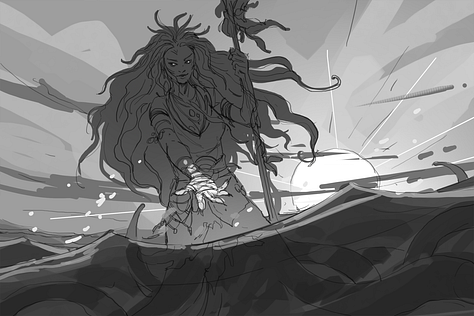
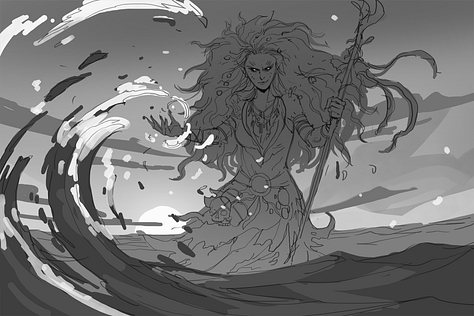
Sketches Color: The chosen sketch gets a rough color treatment. This is where you refine both colors and composition, because sometimes things pop up here you’d never notice in black and white.
Polish: With colors refined and the art nearly finished, you give one last round of minor edits and corrections. Often, once you’ve worked with an artist for a while, this step isn’t even necessary, but it’s still worth including.
If your budget is higher, you can negotiate more rounds of feedback. The key is to set clear boundaries up front so both you and the artist know what to expect.
The Alchemy of Collaboration
As the Rolling Stones remind us, “You can’t always get what you want. But if you try sometimes, you just might find, you get what you need.”
The alchemy of making art comes from the fusion of your imagination and the artist’s creativity. It’s rare that what we picture in our heads as art directors is exactly what shows up on the canvas, but that doesn’t make it any less amazing.
Keep this in mind as you collaborate: the more time and edit rounds an artist can offer, the closer you’ll get to the vision in your head. That said, often, the real joy comes from nudging the art toward what you need, rather than forcing it into a rigid mold.
Note for existing IPs: Of course, if you’re working on a long-standing game with established characters and brand identity, flexibility is much more limited. In those cases, you’ll want to make sure your artist (or art house) can match the essentials, everything from line weight to color palette to character dynamics.
Mechanics may form the foundation of a great game, but it’s art that gives those mechanics their identity, and more importantly, catches attention on social media, the shelf of a game store and on a website.
By defining your Big Three, finding the right artists, and building a process that respects both sides, you set yourself up for fantastic art and for creative partnerships that can last from one project to the next.



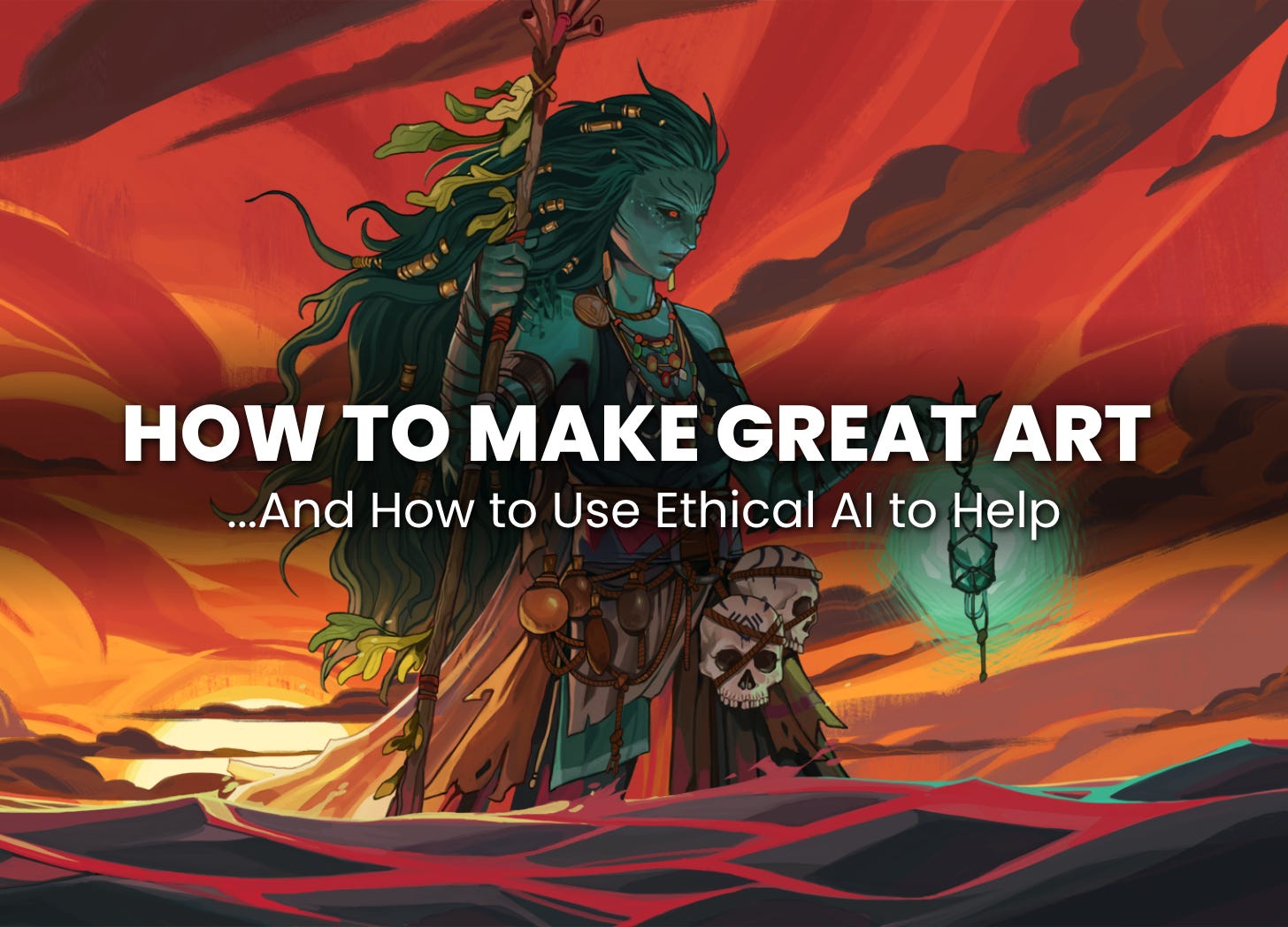
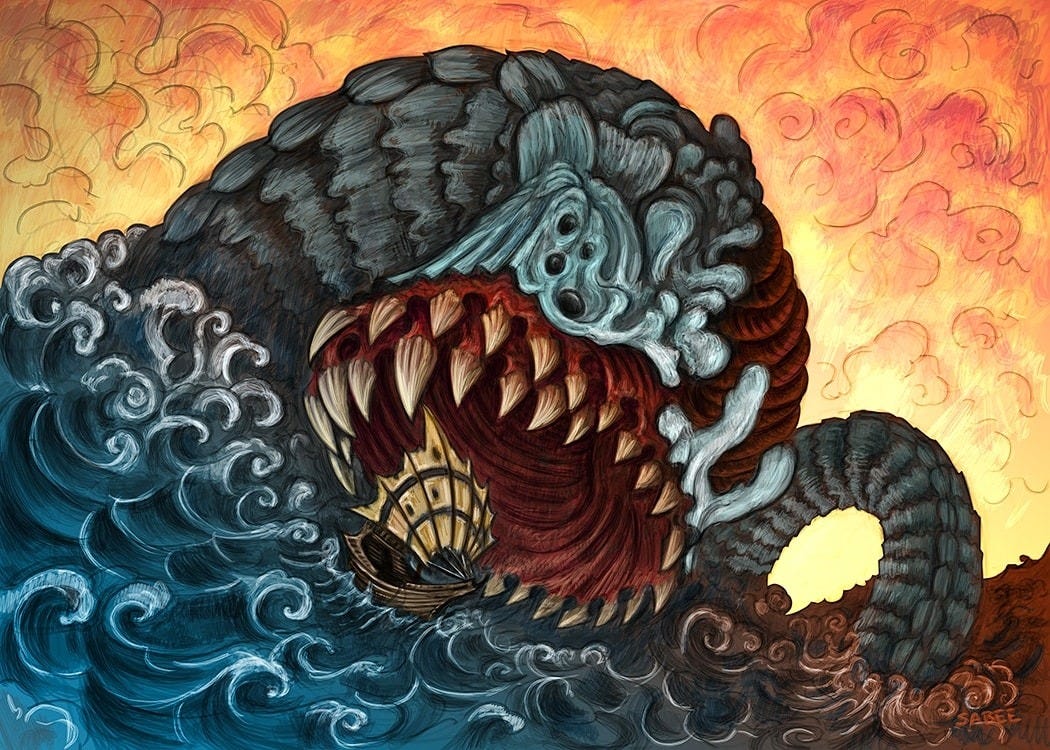
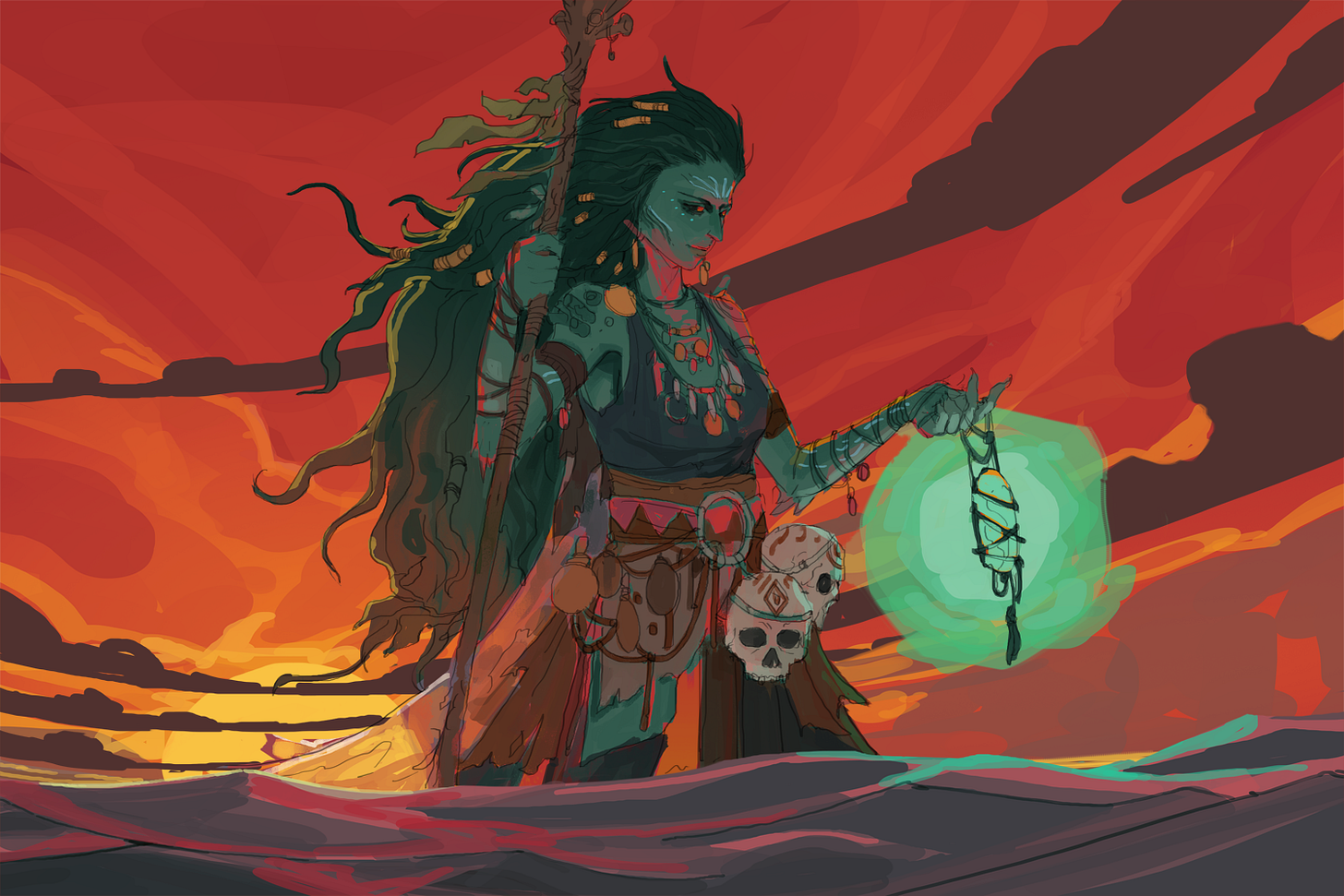
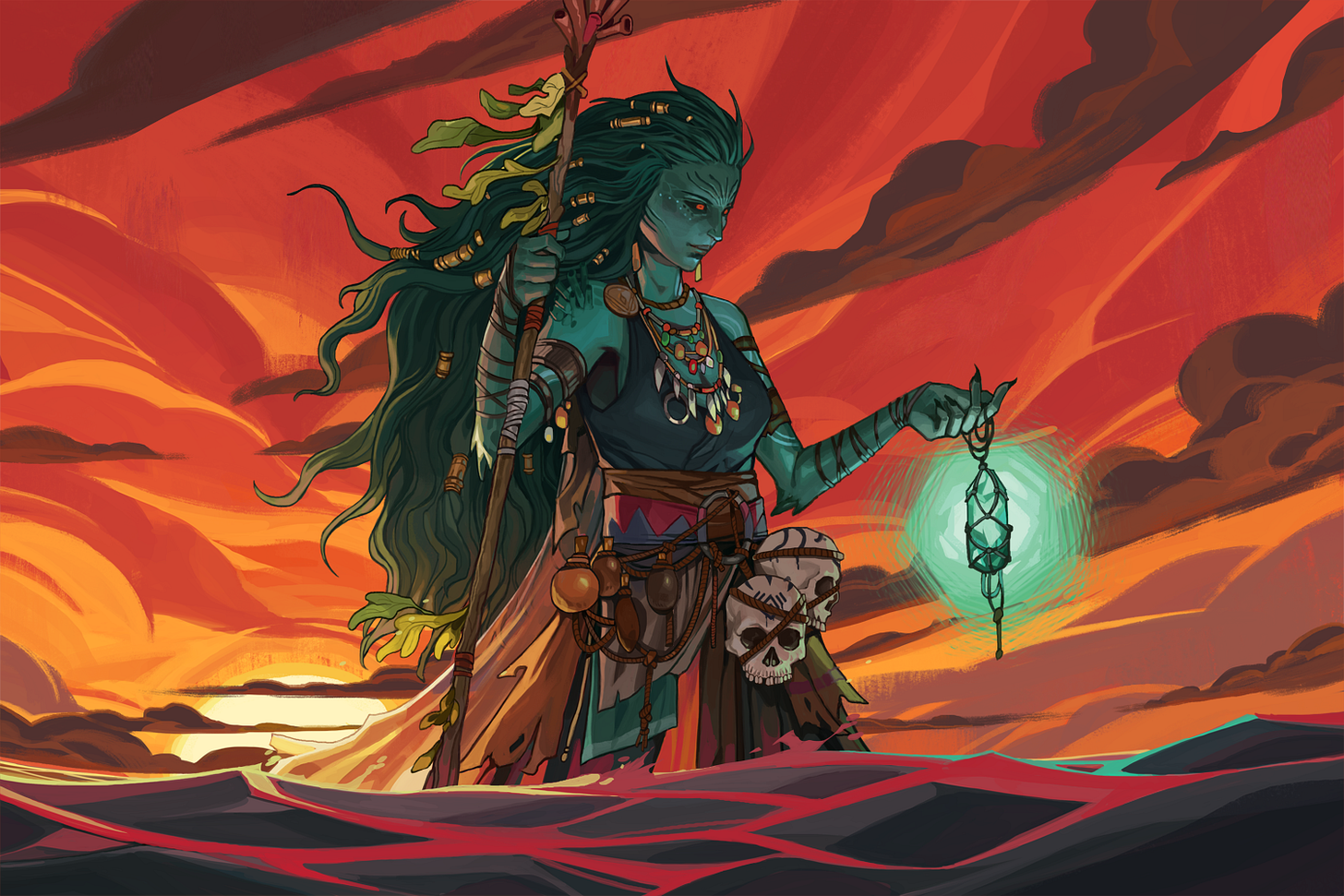
I don’t know if anyone has said this but that title does a lot of disservice to the article imo. I do get that the sentiment is about making great art; but the clarity with which you talk about the process of collaboration and communications is what I wish was highlighted more. The AI bit is inescapable and it’s part of the new pipeline, but really doesn’t feel like it deserves a place in that title. Thank you for sharing. Your podcast is also amazing 🌸